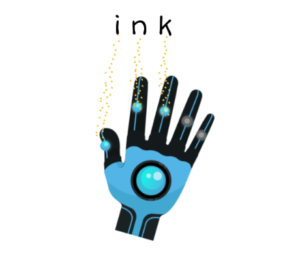Reading Instruction: What Works and What Doesn’t
Written by Sandie Barrie Blackley, Speech-Language Pathologist
Published on December 5, 2022
 All students benefit when they are taught to read, spell, and write using proven methods. For students with language processing difficulties like dyslexia the use of proven methods often makes the difference between literacy and illiteracy. But what are “proven methods”?
All students benefit when they are taught to read, spell, and write using proven methods. For students with language processing difficulties like dyslexia the use of proven methods often makes the difference between literacy and illiteracy. But what are “proven methods”?
Methods for teaching reading, both proven and unproven, have been very much in the news in the last few years, thanks largely to two American journalists. Emily Hanford and Natalie Wexler have sparked an examination of methods for teaching reading, a discussion that was previously all but locked in academia.
Until Hanford and Wexler focused their attention and their considerable journalistic skills on the science of reading, “common teaching practices” were based largely on what the academic establishment believed worked best. Teaching students to guess at written words from pictures and context became “the way we’ve always done it” without any scientific evidence of its effectiveness.
While some students without language or learning deficits did learn to read, a closer examination of these common teaching methods and results showed that this approach was less effective for all students, even students with linguistic strengths. That left a lot of young readers struggling to catch up and keep up: if science-backed methods are effective for all students, they are essential to struggling readers.
In their reporting, Hanford and Wexler have shown that methods supported by objective science work better for all students. Unfortunately for generations of students, common teaching practices have resulted in lower reading proficiency in the U.S. compared to countries that use science-backed methods.
Although Hanford and Wexler didn’t plan it, their coverage of reading instruction methods aligns perfectly with the two general components essential to reading proficiency:
- Decoding – The ability to apply knowledge of letter-sound relationships, including knowledge of letter patterns, to correctly pronounce written words
- Language comprehension – The ability to interpret spoken words, sentences, and discourse
The Decoding Side – Emily Hanford

Emily Hanford’s journalism about reading instruction began in 2017 with her American Public Media (APM) Report, Hard to Read: How American schools fail kids with dyslexia. In writing that report, Hanford began to suspect that America’s schools were not teaching their students to read proficiently – a failure that was affecting grade-level readers as well as those with literacy challenges. So she kept investigating, writing a documentary report each year for the next three years:
- 2018 – Hard Words: Why aren’t our kids being taught to read?
- 2019 – At a Loss for Words: How a flawed idea is teaching millions of kids to be poor readers
- 2020 – What the Words Say: Many kids struggle with reading – and children of color are far less likely to get the help they need
More stories followed in 2021. In 2022 she produced and hosted a six-part podcast series, Sold a Story, in which she and her colleague, Christopher Peak, trace the story of how educators came to believe in a disproven method for teaching reading.
Hanford’s reporting has focused on decoding instruction or, more accurately, the lack of it.

The Comprehension Side – Natalie Wexler

Meanwhile, Natalie Wexler was busy writing about a different kind of gap in America’s literacy instruction. Her focus has been on reading comprehension and its foundations. In 2018 she published an article in The Atlantic – Why American Students Haven’t Gotten Better at Reading in 20 Years. In 2019 she published a book, The Knowledge Gap: The Hidden Cause of America’s Broken Education System and How to Fix It and started publishing an email newsletter, Minding the Gap, on Substack, as well as publishing articles in a variety of magazines and journals.
Two-Sided Reading Instruction and Knowledge-Rich Curricula
To read, spell, and write proficiently students need instruction that is focused on both components: decoding and language comprehension. Instruction and practice need to be adjusted for the patterns of individual students:
- Students who are on the dyslexia spectrum typically have a greater weakness in decoding and spelling than in language comprehension. They need relatively more explicit instruction and focused practice with letter-sound relationships.
- Students who are on the developmental language disorder (DLD) spectrum may also have difficulties decoding and spelling, but they also typically have specific weaknesses in language comprehension. They may need more explicit instruction and focused practice with both letter-sound relationships and with spoken words in sentences and discourse.
As Wexler points out, knowledge is necessary for comprehension, so all students need a knowledge-rich curriculum in content subjects like science, social studies, and language arts.
How Our Curriculum Can Help Dyslexic Children
The Lexercise Structured Literacy CurriculumTM applies the research and insights from the science of reading by combining a science-backed curriculum with the latest in educational technology. Modernizing the Orton-Gillingham approach to maximize effectiveness, we combine face-to-face, individually paced lessons with online games for daily practice, plus parent-teacher support materials for offline activities.
If you are looking to help your child manage dyslexia and to become a fluent, confident reader, check out our online dyslexia therapy solutions or contact us for more information.
2 Responses to Reading Instruction: What Works and What Doesn’t
Leave a comment
Improve Your Child’s Reading
Learn more about Lexercise today.
Schedule a FREE
15-minute consultation



hi my kid is 12 soon to be 13 she is having a VERY HARD TIME reading and writing pls help